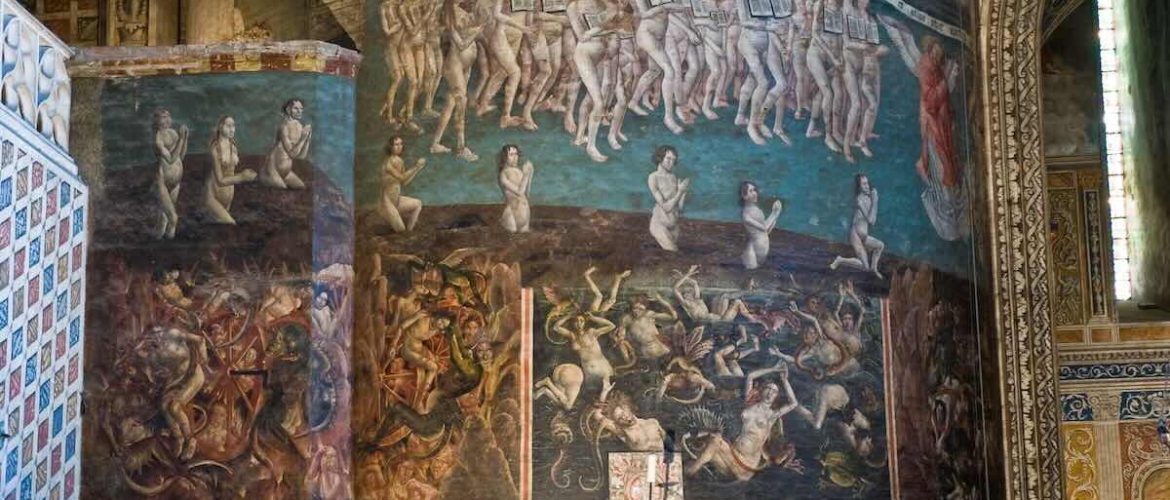The road to Heaven goes through Hell, not away from it
- January 29, 2020
- Posted by: Michael Hallett
- Category: Mechanics of God

It’s easy to conceptualise heaven and hell as opposite ends of a spectrum; that we all sit somewhere in the middle, our proximity to the celestial realms or the pits of fire and brimstone determined by thought and deed as we make our way along the road of life.
Jesus asks us—and we sometimes even manage—to improve ourselves, to become more loving, more forgiving, less judgmental. That this is how to reach the gates of heaven. Yes, it is. But, paradoxically, each step we take towards self-improvement also leads inexorably closer to Hell.
Good intentions
Hence the saying, ‘the road to hell is paved with good intentions’. The usual interpretation for this aphorism is that plenty of well-meaning people end up behaving perfectly badly. It’s a trap that I can’t claim to have never fallen into.
But there is another interpretation. When our good intentions actually succeed in advancing us, the road they edge us along is, counter-intuitively, that to Hell.
Jesus tells us that hell is where “evil people will be thrown into a flaming furnace, where they will cry and grit their teeth in pain.” (Mt 13:50) This fresco from Albi cathedral in southern France shows the literal, medieval interpretation of hell. There is another interpretation.
The blamer
French theologian Jean-Yves Leloup writes: “Evil and sin arise from the blamer in ourselves… This blamer is the shatan (or ‘obstacle’ in Hebrew), the diabolos (or ‘divider’ in Greek) in us.” If Satan and the Devil dwell inside us then surely hell is there also?
What is this hell? It’s the detritus of six millennia of patriarchal programming. As I describe in ROCI21, drought, desertification and famine broke our connection to God. Instead we created a society based on victimization and trauma. One of the costs of this is emotional irresponsibility—blaming others for everything in our lives that hurts or threatens us.
Leloup describes the journey through this Hell: “We cease to accuse others or ourselves, and instead begin to observe the pattern of causes and effects that have led to this state of sickness, suffering and death… When [the blamer] is dead and there is no longer a place for him in us, we are free.”
The road to Heaven
What Leloup doesn’t mention is that this journey is hell.
Revelation 7:14 explicitly tells us that the road to heaven goes through hell. “These are the ones who have gone through the great suffering. They have washed their robes in the blood of the Lamb and have made them white.”
With every step of well-intended growth we heal our ancient, unconscious programming—but we also blindly descend into the fiery furnace of obstacles and divisions within ourselves. The worst aspects of our patriarchal past are the most deeply buried and the most likely to throw us off-track.
With every step of well-intended growth we heal our ancient, unconscious programming—but we also blindly descend into the fiery furnace of obstacles and divisions within ourselves.
Matthew confirms this: “The gate to destruction is wide, and the road that leads there is easy to follow. A lot of people go through that gate. But the gate to life is very narrow. The road that leads there is so hard to follow that only a few people find it.” (Mt 7:13-14)
But just as hell lies inside us, so does heaven. Leloup writes: “The Saviour is to be found within, not elsewhere.” The further you descend into this inner hell, the closer you are to heaven.
Image: Albi cathedral by Pom (Creative Commons Attribution-Share Alike 3.0 Unported)
